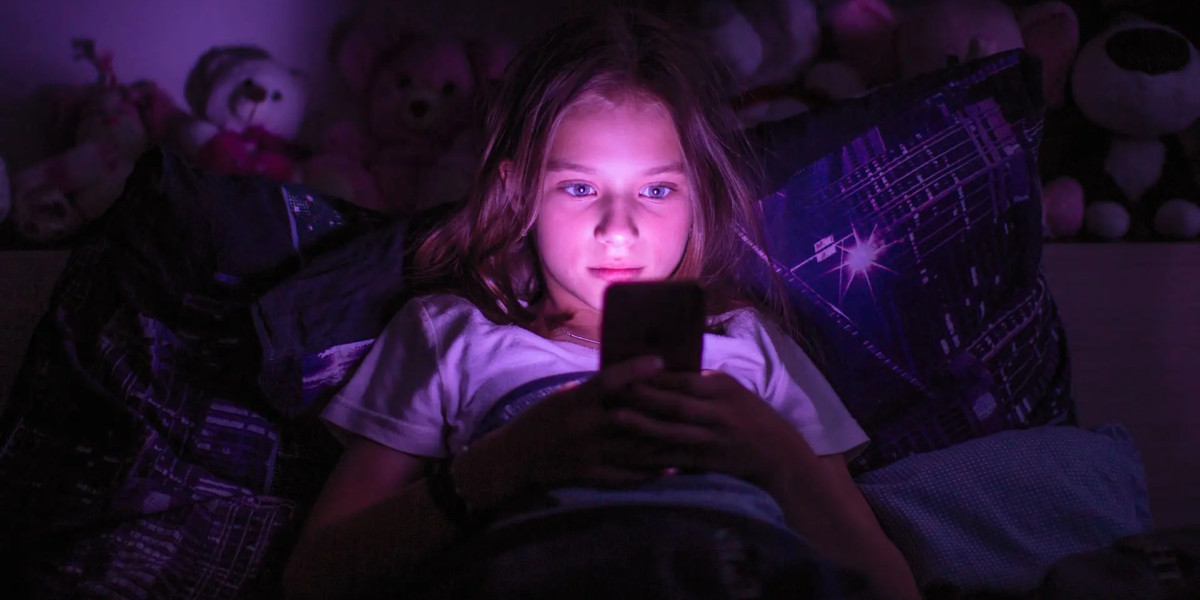Expert offers five tips to protect youth privacy

Photo by Adobe Stock.
If you’ve ever discovered peculiar online shopping activity on your accounts—like $375 worth of vintage See ‘n Says for example*—you know the pitfalls of handing your cellphone to a restless preschooler.
But toddler impulse buys just scratch the surface of potential perils when children and technology collide. With smartphones so ubiquitous and the internet so accessible, children are leaving their digital fingerprints at increasingly early ages, often without guidance on the importance of privacy or security.
Children are accessing digital content at home and school without fully understanding how to navigate their safety and privacy, says UMD Associate Professor Jessica Vitak. “The most important thing parents should know is your kids are never too young to start talking about this.”
For the past eight years, University of Maryland Associate Professors Jessica Vitak and Tamara Clegg and Professor Mega Subramaniam—all from the College of Information Studies—and University of Chicago Associate Professor Marshini Chetty have talked to parents, teachers and kids about the challenges of navigating the online landscape with support from nearly $1 million in grants from the Institute of Museum and Library Services, Google and the National Science Foundation. Their current project, Connecting Contexts, offers a variety of learning opportunities at school and home to help kids safely and smartly interact with the ever-evolving tech they encounter. Having these conversations early, said Vitak, will build awareness and habits around privacy they can take into adulthood.
“Many of the parents we interviewed didn’t feel they needed to talk about privacy with their kids before middle or high school,” said Vitak. “But if you’re willing to hand your child a smartphone or a tablet, then they are old enough to learn how to use them safely.”
In December, the Federal Trade Commission proposed massive changes to existing federal rules around how online platforms collect and monetize children’s data. Senators grilled tech executives from Meta, Discord and other social media giants last month on their efforts to protect children on their platforms; six bills before Congress would tighten online security and safety for kids.
Spanning elementary and middle school, their work offers tested tools and resources for parents, teachers and children—including conversation starters at home, practical tips for building a better password or using social media, choosing learning apps for the classroom and age-appropriate “micro-lessons” that can be woven into the curriculum.
Vitak shared tips with Maryland Today for balancing freedom and safety, monitoring screen time and where children’s data is most at risk:
Make team-based tech decisions.
It’s easy to adopt an authoritarian parenting style when it comes to technology use, said Vitak, but that can result in kids focusing on workarounds. Parents should be curious and have conversations with their kids about what they want to access and why, examining potential benefits and risks, and if there are options other than a hard “no.” “Especially as kids get older, it’s important that they feel like they are part of the decision-making process,” she said.
Test-drive new apps together.
Vitak suggested sitting with your kids the first few times they navigate a new app or game, particularly ones with chat or media-sharing features. Kids should know that some things should never be disclosed online, said Vitak, like real names, ages or addresses.
Educate yourself.
The Children’s Online Privacy Protection Act was created to regulate data sharing and content for platforms geared specifically to children, but the legislation, last updated in 2013, is not up to the demands of 2024. “It’s the reason websites like Instagram have you check a box saying you are over 13, but there is no true authentication,” she said. Games, websites and social media not geared to kids—but often used them, like Fortnite and TikTok—are not necessarily restricting how data is collected or used. Vitak recommends tapping websites like Common Sense Media and checking the privacy settings on apps, which may be unnecessarily sharing locations, contacts and activity or even accessing device microphones.
Don’t (necessarily) sweat over screen time limits.
Vitak stressed that there is a difference between screen time where a kid is drawing or accessing educational games versus YouTube or social media. “Even in a post-pandemic world, everyone is beating themselves up about how much their kids are on devices. But I think it’s more important to focus on the quality rather than the quantity.”
Recognize that online and offline are not distinct spaces.
The abstraction of the virtual world is especially powerful for kids, said Vitak; they often don’t grasp that a real person is behind that avatar or screenname. “Parents are often worried about online harassment, and so I stress to parents the importance of explaining to their kids that they need to understand that what they say or share on a screen is the same as if in-person.”
*This happened to the author in 2015.
The original article was written by Maggie Haslam and published in MD Today on February 20, 2024.